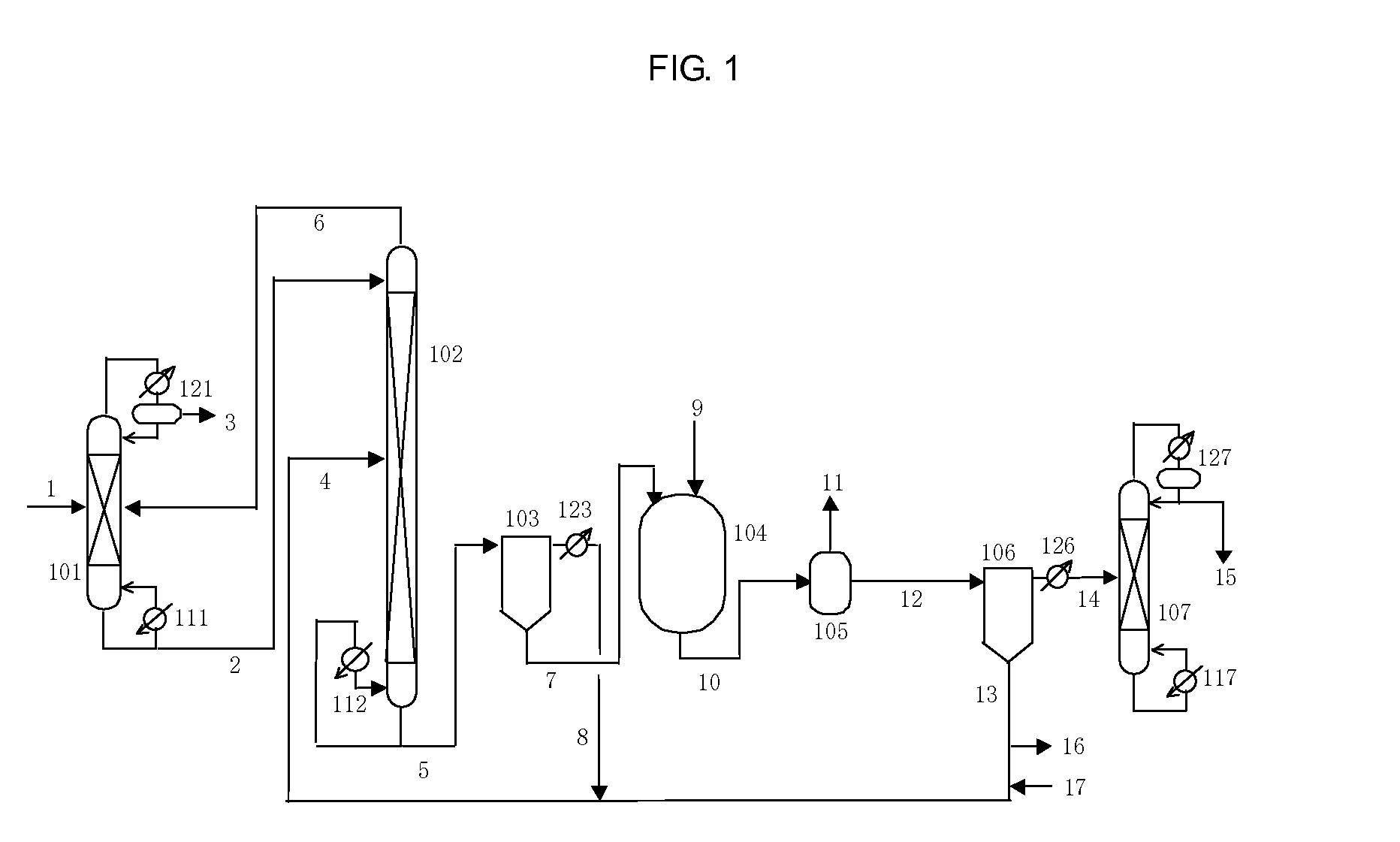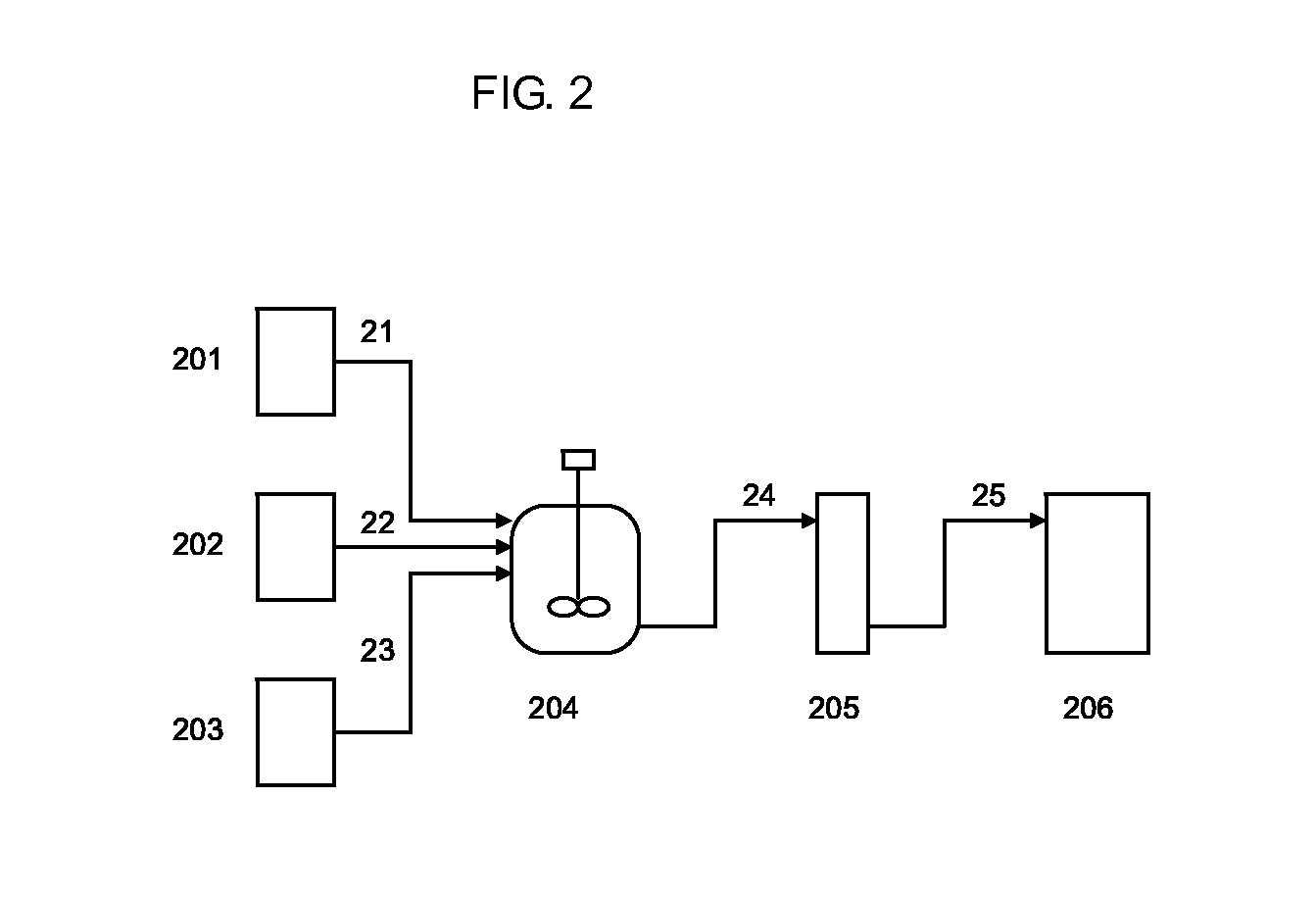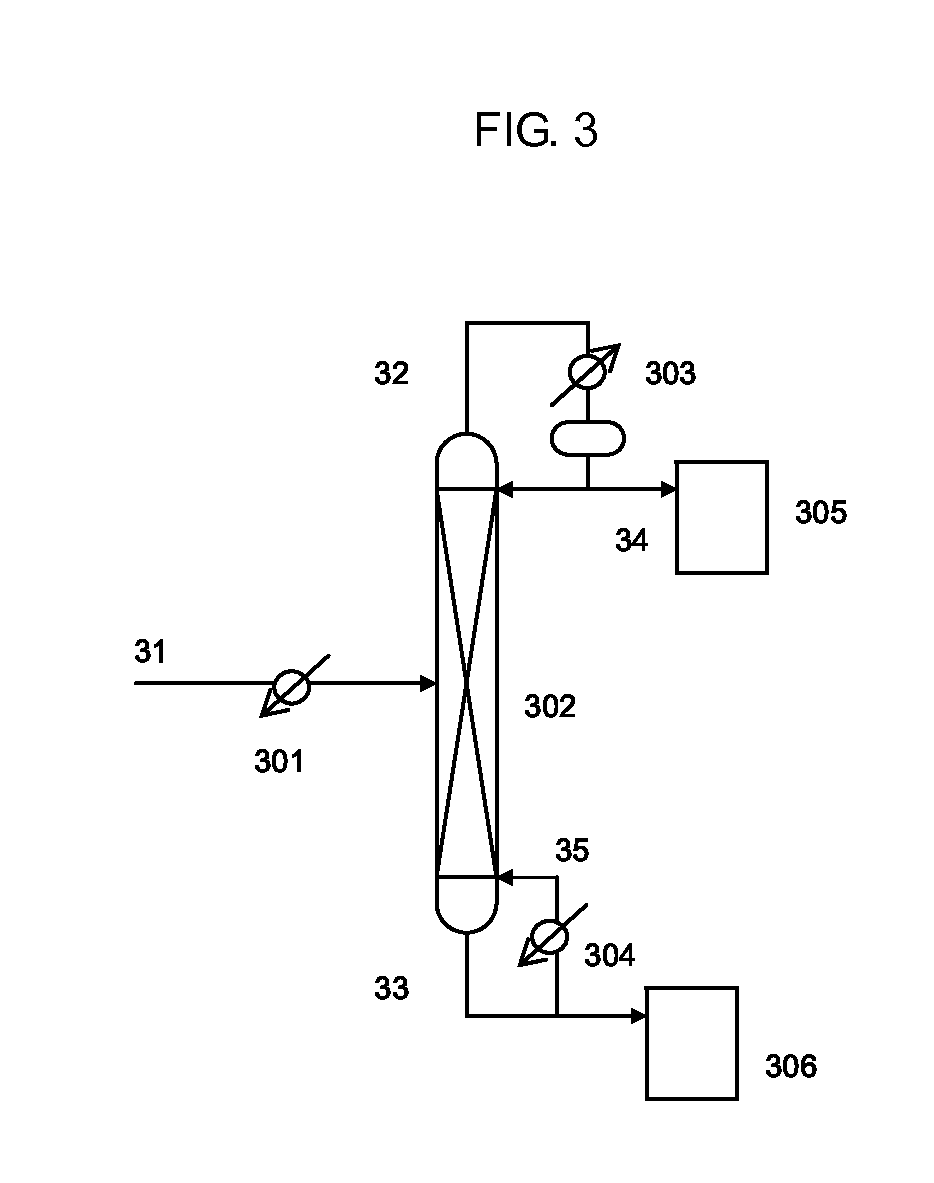Isocyanate production process
a technology of isocyanate and production process, which is applied in the preparation of isocyanate derivatives, isocyanate purification/separation, organic chemistry, etc., can solve the problems of phosgene being extremely toxic, isocyanates having a detrimental effect on the weather resistance and heat resistance of polyurethane products, and the thermal decomposition of carbamic acid esters is susceptible to the simultaneous occurrence of various irreversible side reactions
- Summary
- Abstract
- Description
- Claims
- Application Information
AI Technical Summary
Benefits of technology
Problems solved by technology
Method used
Image
Examples
reference example 1
Production of Bis(3-methylbutyl)Carbonate
Step (1-1): Production of Dialkyl Tin Catalyst
[0312]625 g (2.7 mol) of di-n-butyl tin oxide (Sankyo Organic Chemicals Co., Ltd., Japan) and 2020 g (22.7 mol) of 3-methyl-1-butanol (Wako Pure Chemical Industries, Ltd., Japan) were placed in a 5000 mL volumetric pear-shaped flask. The flask was connected to an evaporator (R-144, Shibata Co., Ltd., Japan) to which was connected an oil bath (OBH-24, Masuda Corp., Japan) equipped with a temperature controller, a vacuum pump (G-50A, Ulvac Inc., Japan) and a vacuum controller (VC-10S, Okano Seisakusho Co., Ltd.). The purge valve outlet of this evaporator was connected to a line containing nitrogen gas flowing at a normal pressure. After closing the purge valve of the evaporator to a reduce pressure inside the system, the purge valve was opened gradually to allow nitrogen to flow into the system and return to the normal pressure. The oil bath temperature was set to be about 145° C., the flask was imm...
reference example 2
Production of Dibutyl Carbonate
Step (II-1): Production of Dialkyl Tin Catalyst
[0314]692 g (2.78 mol) of di-n-butyl tin oxide and 2001 g (27 mol) of 1-butanol (Wako Pure Chemical Industries, Ltd., Japan) were placed in a 3000 mL volumetric pear-shaped flask. The flask containing a mixture in the form of a white slurry was connected to an evaporator to which was connected an oil bath equipped with a temperature controller, a vacuum pump and a vacuum controller. The purge valve outlet of the evaporator was connected to a line containing nitrogen gas flowing at normal pressure. After closing the purge valve of the evaporator to reduce pressure inside the system, the purge valve was opened gradually to allow nitrogen to flow into the system and return to normal pressure. The oil bath temperature was set to be 126° C., the flask was immersed in the oil bath and rotation of the evaporator was started. After heating for about 30 minutes at a normal pressure with the purge valve of the evapo...
reference example 3
Production of Bis(2-ethylbutyl)Carbonate
Step (III-1): Production of Dialkyl Tin Catalyst
[0316]893 g (2.48 mol) of di-n-octyl tin oxide (Sankyo Organic Chemicals Co., Ltd., Japan) and 2403 g (23.6 mol) of 2-ethyl-1-butanol were placed in a 5000 mL volumetric pear-shaped flask. The flask was connected to an evaporator to which was connected an oil bath equipped with a temperature controller, a vacuum pump and a vacuum controller. The purge valve outlet of the evaporator was connected to a line containing nitrogen gas flowing at a normal pressure. After closing the purge valve of the evaporator to reduce pressure inside the system, the purge valve was opened gradually to allow nitrogen to flow into the system and return to the normal pressure. The oil bath temperature was set to be about 165° C., the flask was immersed in the oil bath and rotation of the evaporator was started. After heating for about 40 minutes in the presence of nitrogen at atmospheric pressure with the purge valve o...
PUM
| Property | Measurement | Unit |
|---|---|---|
| Temperature | aaaaa | aaaaa |
| Temperature | aaaaa | aaaaa |
| Fraction | aaaaa | aaaaa |
Abstract
Description
Claims
Application Information
 Login to View More
Login to View More - R&D
- Intellectual Property
- Life Sciences
- Materials
- Tech Scout
- Unparalleled Data Quality
- Higher Quality Content
- 60% Fewer Hallucinations
Browse by: Latest US Patents, China's latest patents, Technical Efficacy Thesaurus, Application Domain, Technology Topic, Popular Technical Reports.
© 2025 PatSnap. All rights reserved.Legal|Privacy policy|Modern Slavery Act Transparency Statement|Sitemap|About US| Contact US: help@patsnap.com



